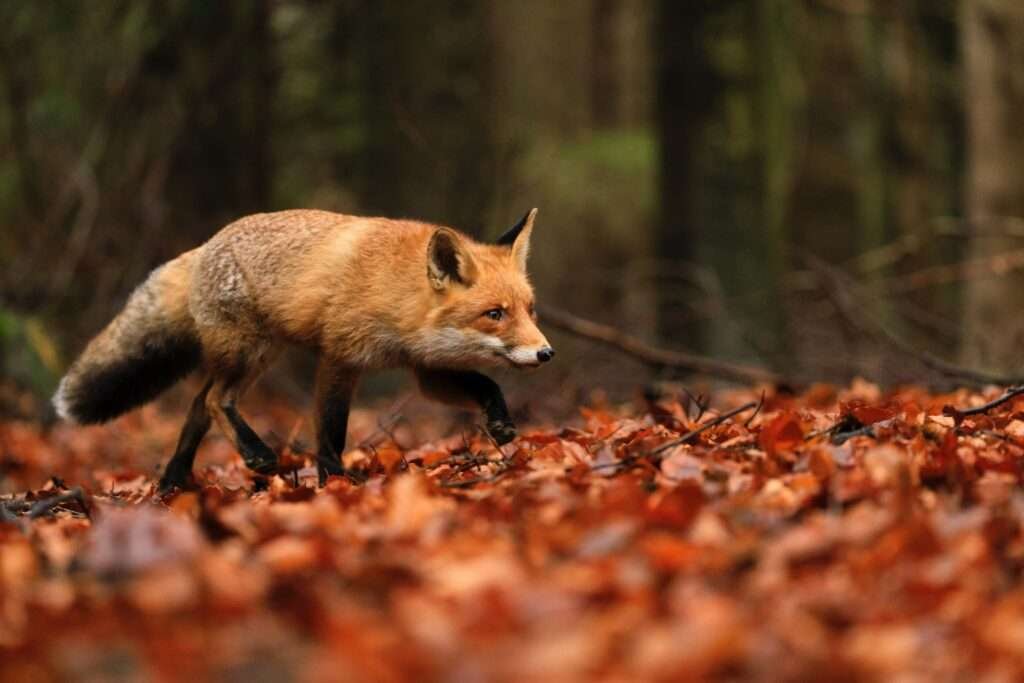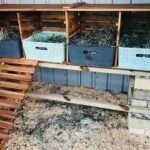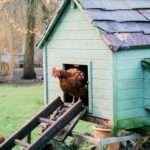
One of the most critical aspects of poultry care is how to protect chickens from predators. While free-ranging chickens may seem idyllic, the reality is that various predators pose a constant threat to your feathered friends. Understanding the potential risks and implementing protective measures are essential to ensuring the safety and well-being of your flock.
In this beginner’s guide, we will explore the world of chicken predators, how to identify their presence, and the common predators that chicken keepers commonly encounter. By the end of this guide, you’ll be equipped with valuable knowledge and actionable strategies on how to protect your chickens from predators.
Understanding Chicken Predators
Before we delve into the protective measures, let’s familiarize ourselves with the predators that pose a threat to chickens. Nature’s balance means that various animals view chickens as a potential food source. Being aware of these predators’ behaviors and hunting habits will help you design a comprehensive protection plan.
- Foxes: Foxes are cunning and agile predators known for their ability to dig and climb. They can strike both during the day and at night, posing a significant risk to free-ranging chickens.
- Raccoons: Raccoons are notorious for their dexterity, which allows them to open latches and doors. They are active at night and have a keen sense of smell, making them skilled chicken raiders.
- Hawks and Owls: Aerial predators such as hawks and owls are a threat to chickens, especially smaller and younger birds. They typically strike during daylight hours and swoop down from the sky.
- Dogs: Domestic dogs, including stray or unleashed dogs, can be a menace to chickens if they have access to the coop or run.
- Cats: Both feral and domestic cats have hunting instincts that may lead them to attack chickens, especially chicks and smaller breeds.
- Skunks: Skunks are opportunistic omnivores that can pose a threat to chickens, particularly during the night.
- Weasels: Weasels are cunning and agile predators that can squeeze through small openings, making them a considerable threat to chickens in confined spaces.
- Snakes: Certain snake species, like racers and rat snakes, are known for raiding chicken nests and consuming eggs.
- Coyotes: In rural areas, coyotes can be a significant danger to chickens. Their intelligence and adaptability make them formidable predators.
- Opossums: Opossums are nocturnal creatures that may target chickens, especially eggs and young chicks.
By familiarizing yourself with these predators, you can better anticipate potential risks and take appropriate protective measures to safeguard your flock. In the next sections, we’ll explore practical steps to protect your chickens from these potential threats and create a safe haven for them to thrive in.

Signs of Predator Presence
Being vigilant and observant is crucial in protecting your chickens from potential predators. Learning to recognize the signs of predator presence will help you take timely action to secure your flock. Here are some common indicators that predators may be lurking nearby:
- Missing or Injured Chickens: If you notice that some of your chickens are missing or injured, it could be a sign of predator activity. Predators often strike and carry off their prey, leaving behind evidence of their presence.
- Disturbed Nesting Areas: Chickens are creatures of habit and tend to lay their eggs in designated nesting areas. If you find eggs scattered outside the nesting boxes or evidence of disturbance around the nesting sites, it could indicate a predator trying to access the eggs.
- Tracks and Droppings: Take time to inspect the ground around the coop and run. Look for tracks or footprints left by potential predators. Additionally, pay attention to droppings, as different predators have distinct droppings that can help identify their presence.
- Evidence of Digging or Burrowing: Some predators, like foxes and weasels, are skilled diggers and can attempt to burrow under fences or coop walls to access your chickens.
- Distressed Behavior in Chickens: Pay attention to your chickens’ behavior. If they appear agitated, fearful, or consistently on edge, it may be an indication of nearby predators.
- Predation During the Night: Many predators, such as raccoons, foxes, and owls, are nocturnal hunters. If you experience repeated predation incidents during the night, it’s likely a nocturnal predator is to blame.
By being alert to these signs, you can quickly assess if your flock is at risk and take appropriate action to protect them. Regularly inspecting your coop and run area and promptly addressing any vulnerabilities will deter predators and ensure your chickens’ safety.
How to Protect Chickens from Predators
Creating a secure and predator-proof environment for your chickens is essential in safeguarding them from potential threats. Implementing physical barriers and structures around your coop and run will greatly reduce the risk of predator attacks. Here are some effective measures to consider:
- Sturdy Fencing: A reliable and sturdy fence is the first line of defense against ground-based predators. Use hardware cloth or welded wire with small openings (1/2 inch or smaller) to prevent predators from reaching through or squeezing in. Bury the bottom edge of the fence at least 12 inches deep to deter digging predators.
- Secure Coop and Run: Ensure that the coop and run have no gaps or holes that predators can exploit. Regularly inspect and repair any damage to doors, windows, and walls to maintain their integrity.
- Predator-Proof Locks: Use locks, latches, and carabiners to secure all coop openings, including doors and nesting box lids. Raccoons, in particular, are notorious for their ability to open simple latches.
- Elevated Roosts: Install roosts at least 2 to 3 feet above the ground to keep chickens out of the reach of ground predators.
- Coop Roof and Wire Mesh: Cover the coop and run with a roof or wire mesh to protect against aerial predators like hawks and owls. A secure roof will also prevent climbing predators, like raccoons, from gaining access.
- Automatic Coop Door: Invest in an automatic coop door that opens at dawn and closes at dusk. This ensures your chickens are safely locked inside the coop during the night, minimizing the risk of nocturnal predator attacks.
- Guardian Animals: Consider having guardian animals, such as dogs, geese, or llamas, to deter predators. These animals can alert you to potential threats and may even chase away smaller predators.

How to Protect Chickens from Predators at Night
Chickens are vulnerable to predators, especially during the night when they are roosting and less alert. Implementing specific strategies to ensure their safety during this time is crucial. Here are some strategies on how to protect chickens from predators at night time.
- Secure Coop Closure: Close the coop door promptly at dusk to ensure all chickens are safely inside. Predators are more active during the night, and a securely closed coop will protect your chickens from nocturnal attacks.
- Motion-Activated Lights: Install motion-activated lights around the coop and run area. These lights will startle and deter predators, making them think twice before approaching.
- Automatic Coop Door: An automatic coop door is not only convenient but also offers an added layer of security. It can be programmed to open at sunrise and close at sunset, ensuring your chickens are safely locked inside during the vulnerable nighttime hours.
- Guardian Animals: Consider keeping a guardian animal, such as a well-trained dog or watchful geese, to deter nocturnal predators. Guardian animals can help keep your chickens safe and alert you to potential threats.
Nesting and Foraging Areas
Chickens often venture outside the coop to forage and lay eggs. Ensuring their safety during these activities is essential for protecting them from daytime predators. Here are some strategies for safeguarding nesting and foraging areas:
- Secure Nesting Boxes: Position nesting boxes in secure locations within the coop to minimize the risk of predation. Using ceramic or fake eggs in the nesting boxes can help prevent egg theft and discourage predators from returning.
- Predator-Resistant Perimeter: Clear tall grass, shrubs, and other potential hiding spots around the coop and run area to create a predator-resistant perimeter. Reducing hiding places will make it more difficult for predators to approach undetected.
- Observing Behavior: Train your chickens to return to the coop at dusk. This helps ensure that they are safely inside before predators become more active during the evening.
- Supervised Free-Ranging: If you allow your chickens to free-range, consider supervising them during foraging sessions. This allows you to monitor their safety and intervene if any predators approach.

Behavior and Management Strategies
Understanding chicken behavior and applying proactive management strategies are essential for their safety. Here are some tips for minimizing risks:
- Closing Coop Access During Peak Predator Activity: Research the peak activity times of predators in your area and ensure the coop is securely locked during those periods.
- Roosting Behavior: Chickens prefer to roost in elevated areas at night. Provide secure roosts inside the coop to keep them out of reach of ground-based predators.
- Train Chickens to Recognize Danger: Chickens can learn to recognize and respond to potential threats. Train them to recognize danger cues, such as unusual sounds or movements, to help them avoid potential predators.
How to Protect Chickens from Predators using Deterrents and Repellents
In addition to physical protection measures, certain deterrents and repellents can help deter predators. Here are some effective options:
- Noise Deterrents: Motion-activated alarms, radios, or even loud wind chimes can startle predators and discourage them from approaching the coop.
- Visual Scare Devices: Placing visual scare devices, like fake predators or reflective objects, around the coop and run can create the illusion of a hostile environment for potential predators.
- Natural Substances: Certain scents, such as predator urine or strong-smelling herbs like garlic and lavender, can act as repellents and deter predators from approaching.
Remember that the effectiveness of deterrents and repellents may vary depending on the predator species and the individual animals’ behavior. It’s essential to rotate and change strategies periodically to prevent predators from becoming accustomed to them.
Community and Neighbor Support
Building a supportive community with fellow chicken keepers and neighbors can strengthen your collective defenses against predators. Share experiences, knowledge, and resources on how to protect chickens from predators for everyone’s flocks. Collaborative efforts can lead to effective solutions and mutual support in dealing with predator challenges.
Protecting Your Flock
Protecting your chickens from predators is an ongoing task that requires vigilance and proactive measures. By understanding the common predators, recognizing signs of their presence, and implementing physical and behavioral protection strategies, you can create a safe haven for your flock to thrive in. Be diligent in observing your chickens’ behavior and surroundings, and always be ready to adjust your protection plan as needed.
With this comprehensive beginner’s guide, you are now equipped to face predator challenges confidently and provide your chickens with the utmost care and protection. Remember, a safe and secure environment not only ensures your flock’s well-being but also enhances your enjoyment of the fulfilling journey of chicken keeping. Happy chicken keeping and may your flock flourish under your watchful care!





